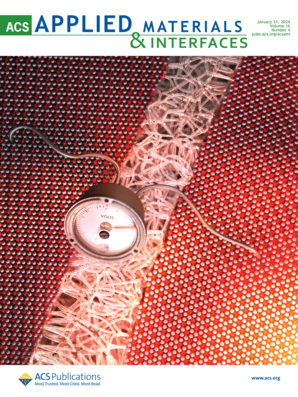用于骨再生的表面改性去蛋白化人脱矿牙齿基质:理化特性和成骨细胞的生物相容性
IF 8.2
2区 材料科学
Q1 MATERIALS SCIENCE, MULTIDISCIPLINARY
引用次数: 0
摘要
由于牙齿的成分与骨相似,因此是一种令人感兴趣的骨移植选择。然而,为克服自体牙移植的有限性而开发的去蛋白化人脱矿牙基质(dpDTM)的孔径和表面粗糙度都不理想。本研究旨在利用酸蚀刻和胶原涂覆技术制造一种表面改性的 dpDTM,然后对其理化和生物学特性进行体外评估。dpDTM 的改性分为两种方案:酸改性 dpDTM(A-dpDTM)和胶原改性 dpDTM(C-dpDTM)。结果表明,与 dpDTM 相比,A-dpDTM 和 C-dpDTM 的孔径更大,表面更粗糙。C-dpDTM中只存在氮,这证明了胶原固定化。所有组的 Ca/P 摩尔比均为 1.67,羟基磷灰石是唯一的成分,结晶度为 65-67%。120 天后,C-dpDTM 和 A-dpDTM 的降解率分别明显增加到 30% 和 20%,而 dpDTM 的降解率仅为 10%。第 30 天,C-dpDTM 的累积胶原释放量为 45.16 µg/ml。成骨细胞在所有支架上的附着和增殖都得到了增强,尤其是 C-dpDTM 的增殖率和分化率最高。总之,包括 A-dpDTM 和 C-dpDTM 在内的 dpDTM 表面改性可通过改变表面性质和促进成骨细胞活性来显著提高生物活性,从而为骨再生应用带来希望。本文章由计算机程序翻译,如有差异,请以英文原文为准。
Surface modified deproteinized human demineralized tooth matrix for bone regeneration: Physicochemical characterization and osteoblast cell biocompatibility
Tooth presents an intriguing option as a bone graft due to its compositional similarity to bone. However, the deproteinized human demineralized tooth matrix (dpDTM), developed to overcome the limited availability of autologous tooth grafts, have suboptimal pore size and surface roughness. This study aimed to fabricate a surface-modified dpDTM using acid etching and collagen coating, followed by in vitro evaluation of physicochemical and biological properties. The dpDTM was modified into two protocols: Acid-modified dpDTM (A-dpDTM) and Collagen-modified dpDTM (C-dpDTM). Results demonstrated that A-dpDTM and C-dpDTM had increased pore sizes and rougher surfaces compared to dpDTM. Collagen immobilization was evidenced by nitrogen presence exclusively in C-dpDTM. All groups had a Ca/P molar ratio of 1.67 and hydroxyapatite as the sole constituent, with 65-67% crystallinity. Degradation rates significantly increased to 30% and 20% for C-dpDTM and A-dpDTM respectively, compared to 10% for dpDTM after 120 days. Cumulative collagen release of C-dpDTM on Day 30 was 45.16 µg/ml. Osteoblasts attachment and proliferation were enhanced on all scaffolds, especially C-dpDTM, which displayed the highest proliferation and differentiation rates. In conclusion, surface modified of dpDTM, including A-dpDTM and C-dpDTM, significantly enhances bioactivity by altering surface properties and promoting osteoblast activity, thereby demonstrating promise for bone regeneration applications.
求助全文
通过发布文献求助,成功后即可免费获取论文全文。
去求助
来源期刊

ACS Applied Materials & Interfaces
工程技术-材料科学:综合
CiteScore
16.00
自引率
6.30%
发文量
4978
审稿时长
1.8 months
期刊介绍:
ACS Applied Materials & Interfaces is a leading interdisciplinary journal that brings together chemists, engineers, physicists, and biologists to explore the development and utilization of newly-discovered materials and interfacial processes for specific applications. Our journal has experienced remarkable growth since its establishment in 2009, both in terms of the number of articles published and the impact of the research showcased. We are proud to foster a truly global community, with the majority of published articles originating from outside the United States, reflecting the rapid growth of applied research worldwide.
 求助内容:
求助内容: 应助结果提醒方式:
应助结果提醒方式:


